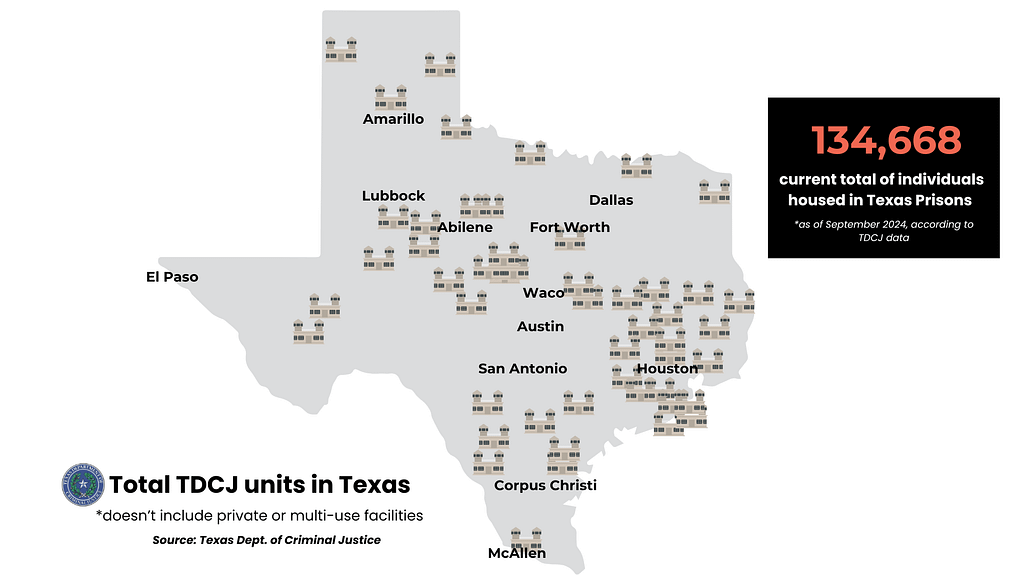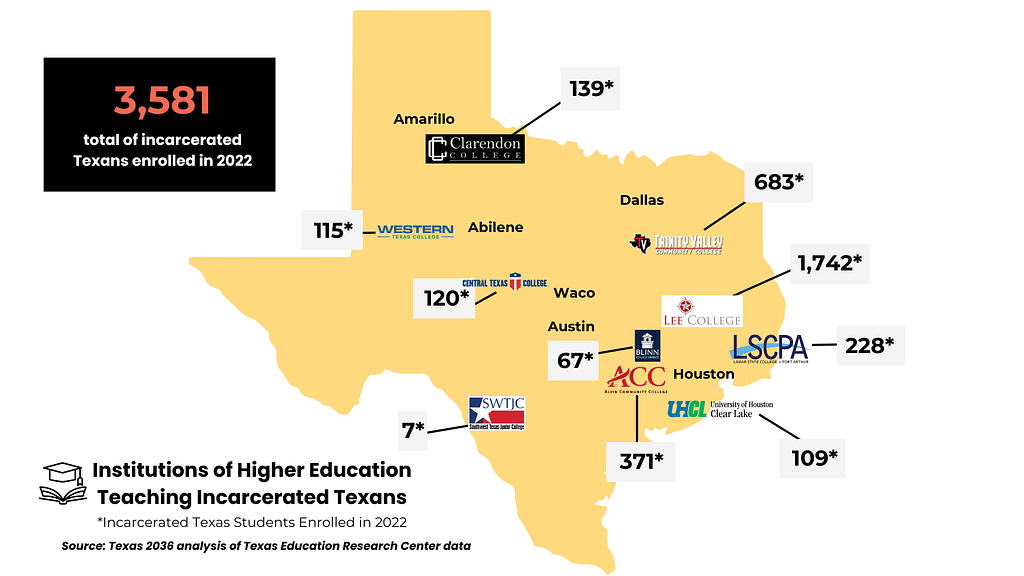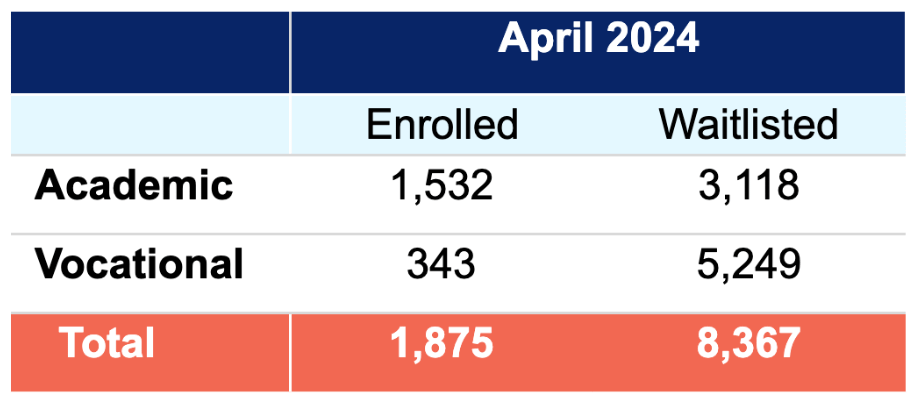Higher ed in Texas prisons: Can it break the recidivism cycle?
This is a preview of our Texas 2036 newsletter exploring how higher ed can help break the recidivism cycle in Texas prisons. To receive this weekly look at our work, sign up here.
The State of Higher Education in Texas Prisons

Texas prisons house tens of thousands of incarcerated Texans a year, but once they reenter society almost half face rearrest within three years, according to state data.
How can Texas address this issue? We look into how expanding higher education opportunities in prison could not only curb those return trips but also improve economic outcomes for formerly incarcerated Texans.
Texas 2036’s report looks into higher ed in prisons
 A new report from Texas 2036 highlights the role that higher education can play in breaking the prison recidivism cycle and what lawmakers can do next year to expand educational opportunities.
A new report from Texas 2036 highlights the role that higher education can play in breaking the prison recidivism cycle and what lawmakers can do next year to expand educational opportunities.
Lawmakers CAN ACT to significantly reduce recidivism, save taxpayers money and improve post-release economic outcomes, including workforce success.
By the numbers: Incarcerated Texans
Texas Department of Criminal Justice (TDCJ) facilities house over 134,500 individuals, with more than 45,000 Texans reentering society annually. Almost half face rearrest within three years, while 15-20% return to prison.

Higher Education in Texas prisons: The state has experienced a 50% decline in higher education enrollment among incarcerated individuals in Texas. From 2011 to 2022, enrollment dropped from 7,203 to 3,581 — suggesting a critical gap in the capacity of correctional education programs to meet demand.
Dive in further: A Closer Look at the Texas Prison System
Education opens doors to successful careers

Source: Texas Dept. of Criminal Justice
Formerly incarcerated individuals who completed higher education programs experienced increased wages, benefiting their post-release reintegration.
Students who have reported wages before and after their enrollment while in prison experienced an increase in their median wages regardless of their field of study.
A recent study showed that employers are 42% more likely to consider hiring formerly incarcerated individuals with postsecondary credentials compared to those with only a GED.
Texas legislators could address this issue

A demand exists to expand programs that would equip incarcerated Texans with the skills and credentials they need to succeed in the workforce upon release.
Legislators can help address that growing demand through a set of common sense reforms next legislative session to better coordinate efforts to educate incarcerated Texans and motivate community colleges to expand their offerings.
“Prison education is a powerful tool not only for improving lives but also for bolstering our workforce and saving taxpayer dollars. Expanding these programs will require Texas to strengthen data collection and governance to ensure quality and scalability.”
Luis Soberon, senior policy advisor for Texas 2036
Texas community colleges can make an impact
Community colleges educated over 90% of incarcerated Texans enrolled in higher education programs in federal and state prisons in 2022.

Note: This chart does not fully encompass the total number of institutions who enroll incarcerated Texans. Institutions in this chart are currently reporting data to the Texas Higher Education Coordinating Board on incarcerated students.
Higher education’s unmet demand in Texas prisons
In April 2024, approximately 1,800 individuals incarcerated in TDCJ facilities were enrolled, while over 8,300 remained waitlisted for educational programs in Texas prisons — up from 8,169 on the waitlist in 2022.

Source: TDCJ public information request
New policy developments present more opportunities to fiscally tackle this demand for postsecondary educational programs.
At the state level, community colleges now receive additional funding to educate the economically disadvantaged, academically disadvantaged and adult learners — populations with a significant presence in prison.
Texas colleges and universities also have the opportunity to institute prison education programs, which could make prisoners eligible for federal Pell Grants to help defray the costs of education.
“Higher education has the potential to transform lives and ensure more Texans have the opportunity to contribute to our economy. This report highlights the expanding role that higher education institutions, such as community colleges, can play for incarcerated Texans.”
David Leebron, Texas 2036 President and CEO
A policy roadmap for higher ed in prisons

Next year, the Legislature is set to deliberate Sunset legislation concerning TDCJ and the broader adult corrections system. We offer the following policies to consider:
Improve Governance and Coordination
Enable TDCJ’s main education provider, Windham School District, to administer higher education programming, coordinate among colleges and universities and help incarcerated Texans navigate career and education options.
Expand Community College Reach
Community colleges are geographically restricted to teaching within a designated service area with very limited exceptions. One of those exceptions should be a streamlined process to offer postsecondary education and training to incarcerated Texans in prisons outside of a college’s service area.

Source: Windham School District
Enhance Data Collection and Sharing
Improve data collection and sharing within TDCJ to evaluate higher education program outcomes effectively. The lack of data sharing between TDCJ and the broader education/workforce data ecosystem hamstrings efforts to effectively measure program outcomes.
Integrate Prison Education into Workforce Goals
Align TDCJ’s education objectives with Texas’ “Building a Talent Strong Texas” workforce strategy, establishing measurable goals for degree attainment pre-release.
How can we best prepare inmates educationally to reenter society?

Source: Windham School District
